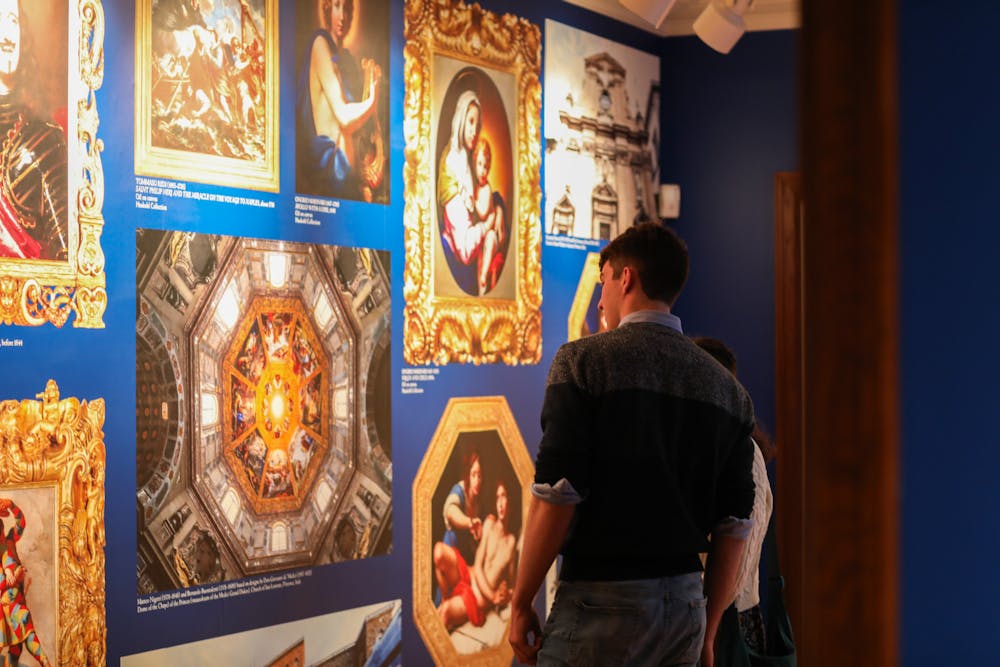Access to the old masters of art on a college campus is rare, but the David Owsley Museum of Art (DOMA) has made it possible for both students and community members.
Their current exhibition, Beyond the Medici, features pieces from a collection lent to them by collector Sir Mark Fehrs Haukohl including some pieces of their own.
DOMA, in partnership with the Arts Alive program, is connecting the art with the music of the time, seeking to bridge the gap between mediums and increase the interactiveness of the museum.
“I think it helps connect people with the art,” Museum education intern Shawna Hayes said. “I feel like it's very easy to separate yourself from art of the past, and this makes it easier to connect.”
The Indianapolis Baroque Orchestra helped bridge that gap. The event, for DOMA, is the first one of its kind.

Violinist Marty Perry of the Indianapolis Baroque Orchestra has a solo March 28 at Sursa Hall. Perry is principal second violin for the orchestra. Andrew Berger, DN
“Certainly not in the ten years I’ve been here we haven’t gotten anything like this,” Museum Director Robert LaFrance said. “This is a big deal, us bringing the Indianapolis Baroque Orchestra to you instead of you having to go the the orchestra.”
The event, free to students and $10 for community members, engaged a diverse group of individuals.
DOMA remained open after hours to host a reception that was open to the public with hors d'oeuvres and refreshments. It allowed attendees to view the exhibit prior to the performance.
“This is a real gem,” Linn Sousa said. “It’s just startling to have this much art from all over the world.”
The orchestra, which consisted of pieces from Antionio Vivaldi to George Frideric Handel, gave a peek into the music in the house of the Medici family.
In a talk prior to the performance, professor of music history Murray Steib gave a brief background of the Medici family and the reason the music was tied to them, focusing first on Ferdinando I de' Medici.
“He attracted top musicians to Florence and made it an important musical center once again,” Steib said.
The Indianapolis Baroque Orchestra, consisting of 12 members, performed nine pieces over the course of the evening. All four forms of the music of the era were featured. Sonatas, sinfonias, concerto grossos and solo concertos.
The pairing of events allowed for students and community members to dive into the Florentine Baroque era, sight and sound coming together in harmony.
Contact Madelyn Bracken with comments at madelyn.bracken@bsu.edu.





The Daily News welcomes thoughtful discussion on all of our stories, but please keep comments civil and on-topic. Read our full guidelines here.